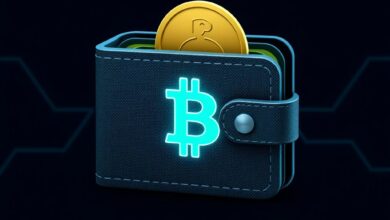How to use MetaMask wallet safely

Always enable two-factor authentication (2FA) on any platform that supports it. This adds an extra layer of protection when accessing decentralized applications (dapps) or managing Ethereum tokens. A simple SMS or authenticator app can significantly reduce the risk of unauthorized access.
Regularly update your browser and MetaMask extension to the latest versions. Developers consistently release updates that patch vulnerabilities, ensuring a more secure environment for interacting with web3 technologies. Ignoring these updates exposes your assets to potential threats.
Be cautious when connecting to new dapps. Before authorizing any transactions, verify the legitimacy of the application and its developers. Research community feedback and ratings to ensure you’re not risking your tokens with untrusted services.
Store your seed phrase offline in a secure location. This mnemonic is the key to recovering access to your Ethereum assets if you lose your device. Never share this information online or with anyone claiming to offer assistance; legitimate support will never ask for it.
Utilize hardware wallets in conjunction with your digital interface for enhanced security. These devices store private keys offline, making them less vulnerable to phishing attacks or malware that might target your computer.
Monitor transaction activity regularly through block explorers like Etherscan. Keeping track of outgoing transfers can help identify any unauthorized actions swiftly, allowing you to respond before significant losses occur.
Creating a Strong Password
A robust password is your first line of defense against unauthorized access to your cryptocurrency holdings. Follow these guidelines to establish an effective passphrase:
- Length matters: Aim for at least 12-16 characters.
- Mix it up: Combine uppercase letters, lowercase letters, numbers, and special symbols.
- Avoid personal information: Steer clear of easily guessable data such as birthdays or names.
- Use phrases: Consider creating a memorable sentence or phrase and modifying it with numbers and symbols.
- Unique for each dapp: Don’t recycle passwords across different platforms; every account should have its own distinct passcode.
Regularly update your passphrase to mitigate risks from potential breaches. Use a password manager to store and generate complex passwords securely, making it easier to manage multiple accounts within the Ethereum ecosystem. Always enable two-factor authentication where available to add an extra layer of protection on your Web3 interactions.
Enabling Two-Factor Authentication
Implement two-factor authentication (2FA) for enhanced security when interacting with dapps and managing tokens. This additional layer helps prevent unauthorized access to your Ethereum assets.
Choose an authenticator app like Google Authenticator or Authy. After installing the app, set it up by linking it to your account through a QR code or manual entry of a secret key provided during the setup process.
Once activated, every time you log into your wallet or perform sensitive actions, you will be prompted to enter a temporary code generated by the authenticator app. This code changes every 30 seconds, making it difficult for anyone without physical access to gain entry.
Regularly back up your 2FA settings; losing access could lock you out of your tokens. Store backup codes securely in case you need to restore access later.
Stay vigilant against phishing attempts that may target your authentication processes. Always verify URLs and never share your codes with others. By incorporating 2FA into your security routine, you significantly strengthen the protection of your digital assets within Ethereum’s ecosystem.
Recognizing Phishing Attacks
Always verify URLs before entering any credentials related to your dapps or tokens. Phishing attempts often use URLs that are very similar to legitimate websites but contain slight variations. Check for misspellings or unusual characters in the web address.
Be cautious of unsolicited emails or messages claiming to be from service providers. These can include links that lead to fake sites designed to steal login information. Never click on links from unknown sources.
If you receive a notification asking for your seed phrase or private key, treat it as a warning sign. No legitimate platform will request this information through email or messaging channels. Always keep these details confidential and stored securely.
Utilize browser extensions that flag known phishing sites when interacting with web3 applications. This extra layer of security can help you stay protected while exploring various platforms and managing your ethereum assets.
Familiarize yourself with common tactics used by attackers, such as creating fake websites mimicking well-known exchanges or wallets. If something seems off about a website’s design or functionality, exit immediately and double-check its legitimacy.
Regularly update your wallet software to ensure you’re protected against the latest vulnerabilities. Developers frequently release patches that enhance security and mitigate risks associated with phishing attacks.
Educate yourself on emerging threats within the cryptocurrency ecosystem. Staying informed about recent scams can help you recognize potential dangers and avoid falling victim to malicious activities targeting crypto users.
Backing Up Your Seed Phrase
Store your seed phrase securely offline. Write it down on paper and place it in a safe location, away from any electronic devices. Avoid saving it digitally, as this increases the risk of hacking.
Consider using a fireproof and waterproof safe to protect against physical damage. Multi-layered security adds another layer of protection; keep copies in separate locations, ensuring that they’re not easily accessible to unauthorized individuals.
Engage with dapps cautiously and remember that sharing your seed phrase can lead to loss of funds. No legitimate service will ever request this sensitive information. Always maintain skepticism towards unsolicited messages or links claiming to be associated with Ethereum or web3 services.
Regularly review your backup method and make updates if necessary. If you suspect any compromise, transfer your assets to a new wallet with a fresh seed phrase immediately.
For peace of mind, explore hardware wallets for storing large amounts of cryptocurrency. They provide additional security while interacting with decentralized applications.
Updating Your MetaMask Regularly
Keep your browser extension and mobile application up to date. Regular updates ensure that you have the latest security patches and improvements, minimizing vulnerabilities that could be exploited by malicious actors.
Check for updates in your browser’s extension store or the app store on your device. Enable automatic updates where possible to maintain the integrity of your Ethereum transactions and interactions with dapps.
Review the release notes provided with each update. These often highlight new features, bug fixes, and any security enhancements made. Being aware of changes can help you adapt swiftly to the evolving web3 environment.
If an update prompts a change in settings or permissions, assess these carefully. Sometimes new functionalities may require adjustments in how you manage your tokens or connect to third-party services.
Stay engaged with community forums or official channels related to this wallet. User feedback during updates can provide insights into potential issues or benefits that arise from new versions.
By maintaining an updated version of this essential tool, you reinforce your defense against threats while enjoying improved functionality across various decentralized applications.







